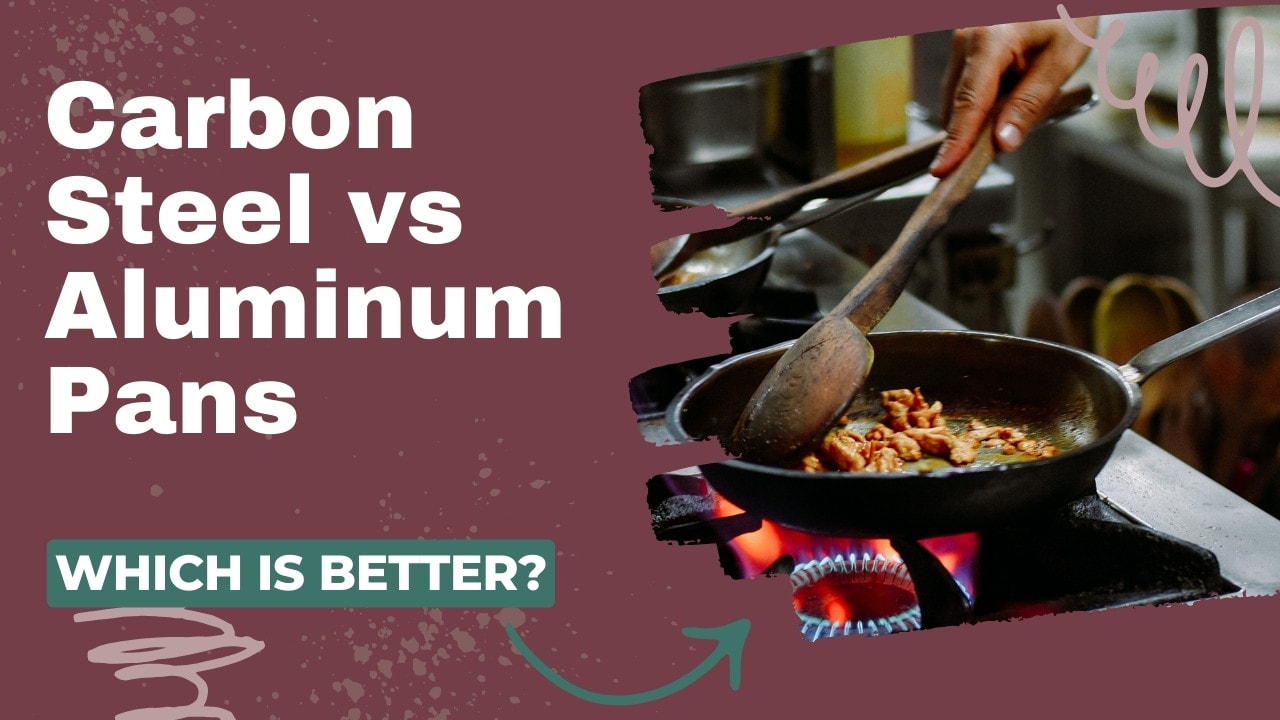Back in my student days, I cooked every meal in one wonky aluminum pan. It served me well for years until I destroyed the nonstick coating and had to trash it. But I’m not alone in relying on aluminum; these pans have been in circulation since the late 19th century. Although they didn’t have nonstick coatings yet, aluminum pans swiftly overtook materials like carbon steel in popularity at the beginning of the 20th century because they were so affordable and efficient.
But home cooks today – like myself – are swinging back towards wanting to invest in pans that will both perform well and last for many years. So today I’m going to compare aluminum to carbon steel, so you can understand the pros and cons of both.
Carbon Steel vs. Aluminum Pans – Pros and Cons
TL: DR: here’s a quick comparison of carbon steel vs. aluminum cookware.
| Carbon Steel | Aluminum |
|---|---|
| No chemical coatings | Ceramic or Teflon coating |
| Metal utensil safe | Only use silicone or wooden utensils |
| Heirloom pieces | Only last 3-5 years |
| Pan needs to be seasoned and used with enough oil to release food | Food releases easily with little oil |
| Requires fat to be nonstick | Better for low-fat cooking |
| Needs to be seasoned | No maintenance required |
| Hand wash only | Hand wash recommended |
| Learning curve to use | Beginner friendly |
| Very durable surface | Coating is easily damaged |
| Acidic foods can damage seasoning | Acidic foods can damage nonstick coating, but not as easily |
| Good for searing | Better for delicate foods like eggs and fish |
| More expensive | Affordable |
Honestly, I think that a versatile kitchen has space for both carbon steel and aluminum pans. They are suited for different uses, so an active home cook is bound to get plenty of use from both pans.
All About Aluminum Pans
What are Aluminum Pans?
Aluminum is a lightweight, affordable metal that is popular as a cookware material because it heats fast and evenly. Many types of aluminum cookware exist, including cast aluminum pans, anodized pans, hard anodized pans, thin camping cookware, bakeware, and nonstick-coated cookware.
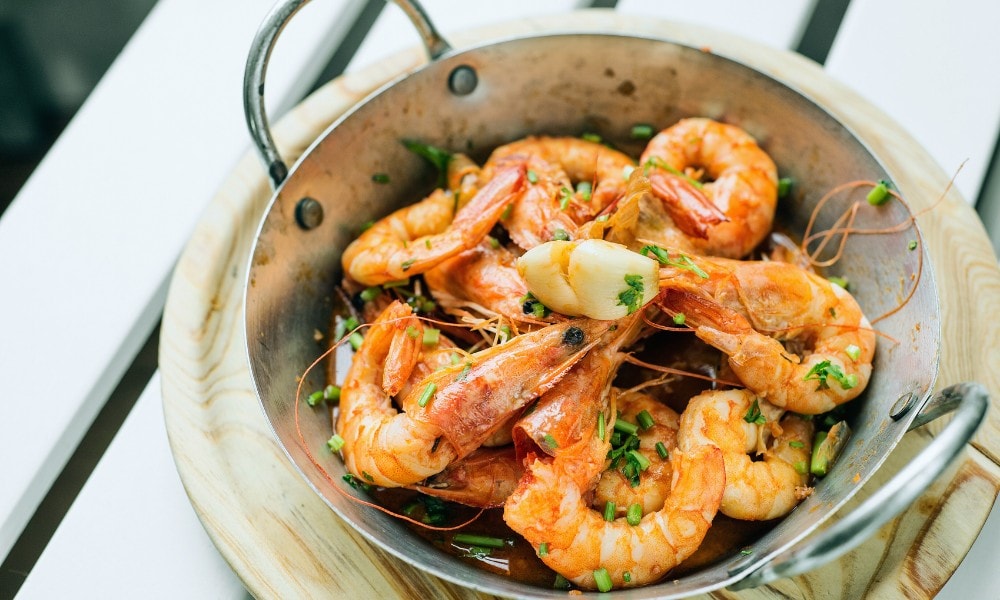
Bakeware and camping cookware are generally left uncoated. They are made from very thin natural aluminum that heats very quickly but tends to be easily dented or damaged. It is also most likely to transfer aluminum to your food.
However, almost all everyday aluminum pots and pans have a nonstick coating of some form. This makes the food release easily and prevents the aluminum from making direct contact with your food.
When choosing an aluminum pan, I always recommend investing in a hard anodized option with a ceramic nonstick coating. Hard anodized aluminum has gone through an electrochemical process to make it more durable.
Ceramic-coated vs Teflon-coated Aluminum Pans
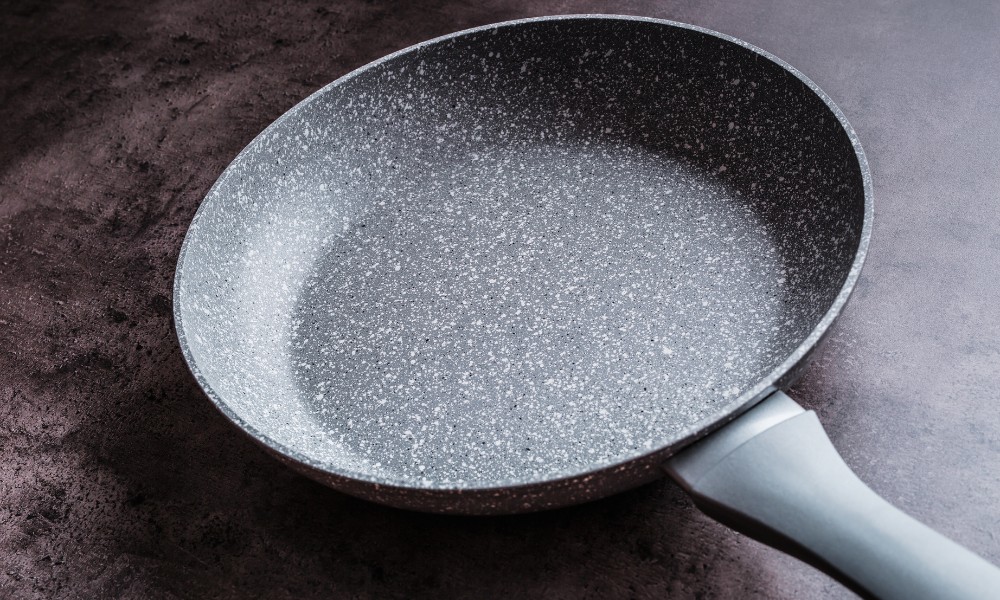
As I mentioned above, most aluminum cookware has a nonstick coating of some form. In fact, – most coated pans are made of aluminum.
All “nonstick” coatings fall into two categories: PTFE-based (Teflon) and ceramic.
Many brands have their own fancy names for their nonstick, but they all fit into one of these two groups. PTFE nonstick is a synthetic polymer coating, while ceramic nonstick is silica-based. The two coatings perform similarly and have a comparable lifespan.
Today, many consumers are concerned about “forever chemicals” in nonstick pans and are moving towards nonstick cookware without Teflon, aka ceramic. (I have opinions on this – but will get into the health concerns of these coatings later in this article.)
Advantages of Aluminum Pans
In my eyes, the main advantages of aluminum pans are that they heat up quickly, don’t need high heat to perform well, have a nonstick surface, and are affordable.
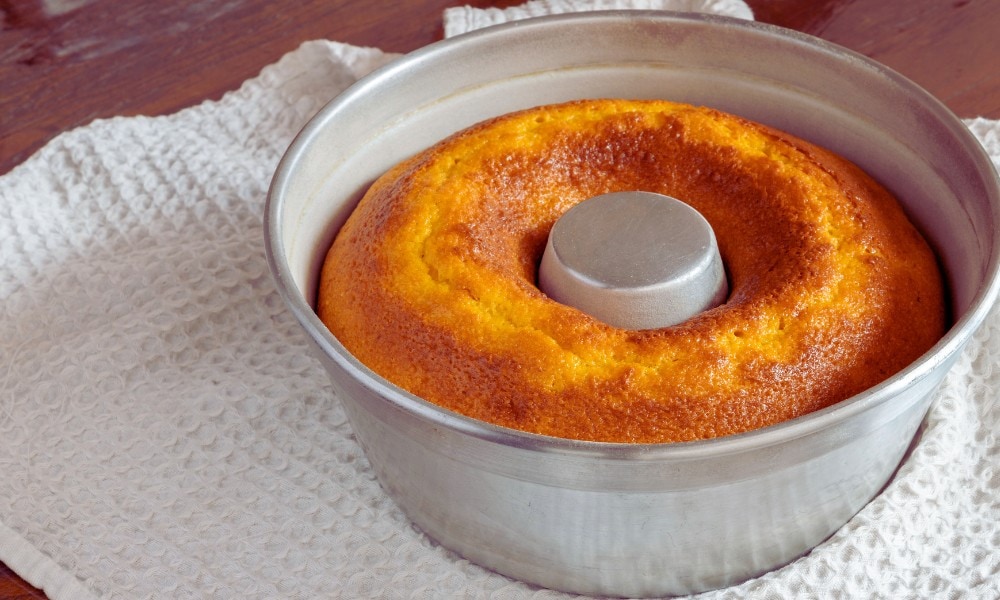
You can pick up a high-quality aluminum pan for $20-30, so it’s excellent for beginners. They are super easy to use because the nonstick coating makes food release easily and cleanup a breeze. The nonstick also means you use less oil when cooking, which is healthier in the long run.
Aluminum is not naturally induction-compatible, but many are designed with stainless steel set into the base to make them compatible.
Aluminum is such a great heat conductor that many stainless steel pans have an aluminum core. This means these pans heat very quickly without any hotspots if your pan is high quality.
Disadvantages of Aluminum Pans
I may have just sung the praises of aluminum, but I have to admit that it has some significant drawbacks.
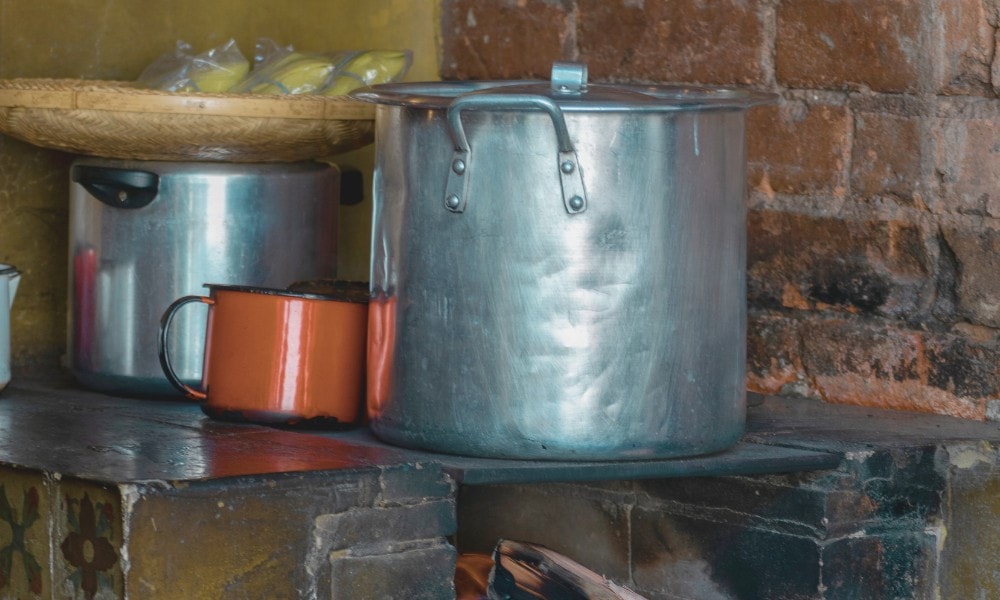
My main problem is that aluminum pans have a very short lifespan. Aluminum is a softer metal, so it’s more prone to warping or denting unless it’s hard anodized. But even hard anodized pans will only last 3-5 years before the nonstick coating deteriorates.
Since aluminum pans are almost always nonstick, they can’t handle high heat, dishwashers, or metal utensils.
What Can You Cook in an Aluminum Pan?
Aluminum is perfect for cooking delicate proteins like fish that don’t require high heat. It’s great for potatoes, crepes, and breaded or battered food. It’s also my go-to pan when it comes to cooking eggs because they never stick.
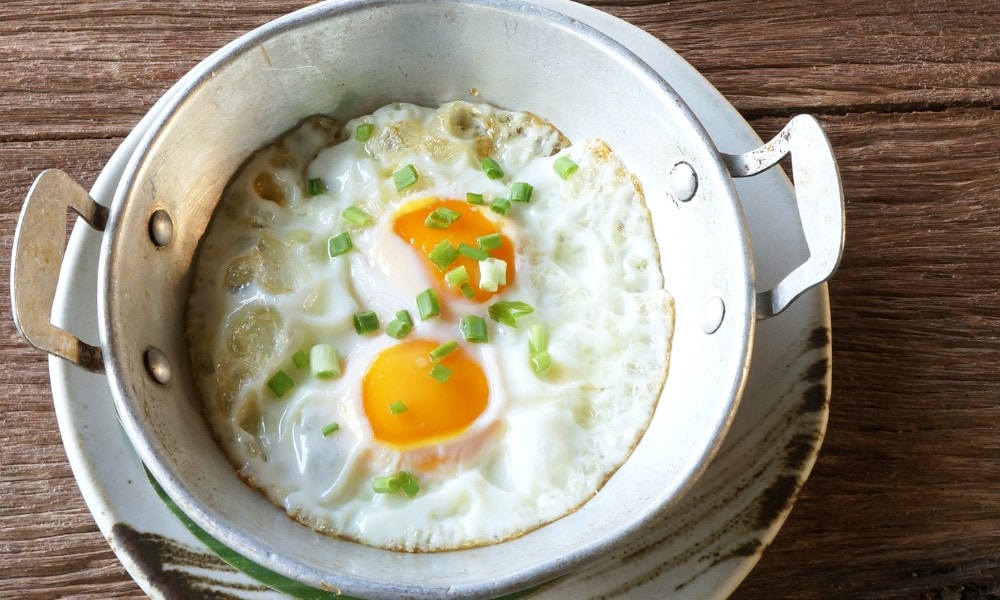
What to Avoid With Aluminum Pans
I recommend avoiding searing on high heat in aluminum pans. They are best used over medium-low heat, so keep the steaks in your stainless steel or carbon steel skillet.
Steer clear of dishes like stir-fries that need lots of flipping and could damage your nonstick coating. Acidic food like tomato or wine-based sauces can damage your nonstick coating, so don’t cook those in your aluminum pans.
The nonstick coatings on these pans are very delicate, so only use wooden, plastic, or silicone utensils.
Do You Need to Season Aluminum Pans?
No, aluminum pans don’t need to be seasoned because they come from the factory with a polymer or ceramic nonstick coating. The huge selling point for aluminum pans is they require little maintenance, unlike carbon steel.
All About Carbon Steel Pans
What are Carbon Steel Pans?
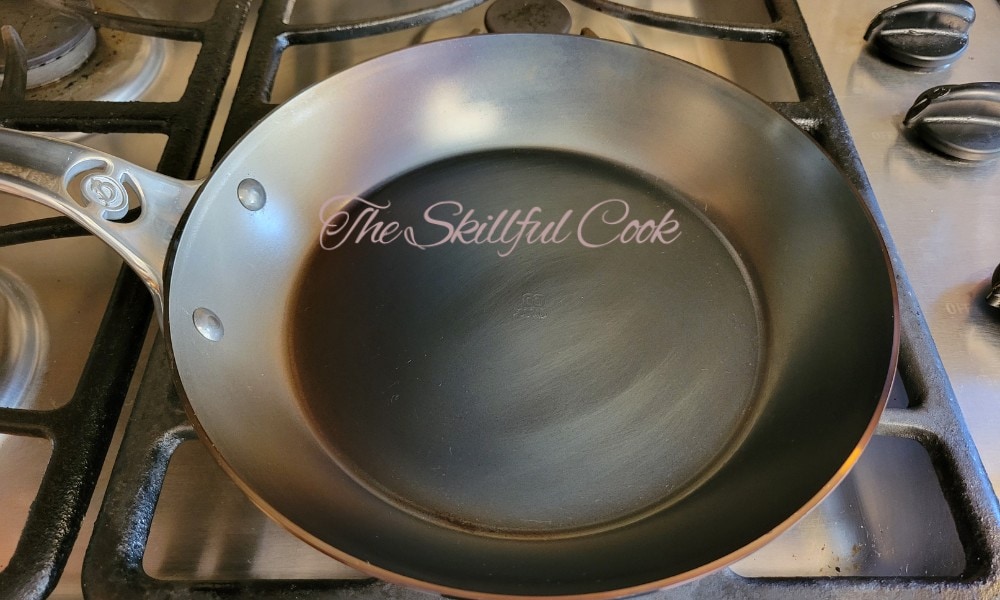
Carbon steel is made from 98-99% iron and 1-2% carbon. It can also contain trace amounts of elements like silicon, phosphorus, sulfur, or manganese. This makeup makes it very durable. This cookware is often compared to cast iron because it has similar heat retention and chemical makeup. But carbon steel cookware is a lightweight alternative that is less likely to scratch a glass or induction surface.
Cooking in carbon steel requires a learning curve, but once you’ve mastered it, you’ll be hooked!
Advantages of Carbon Steel Pans
A significant selling point of carbon steel is its lifespan. Unlike aluminum, these pans are heirloom items that will last a lifetime if you take care of them.
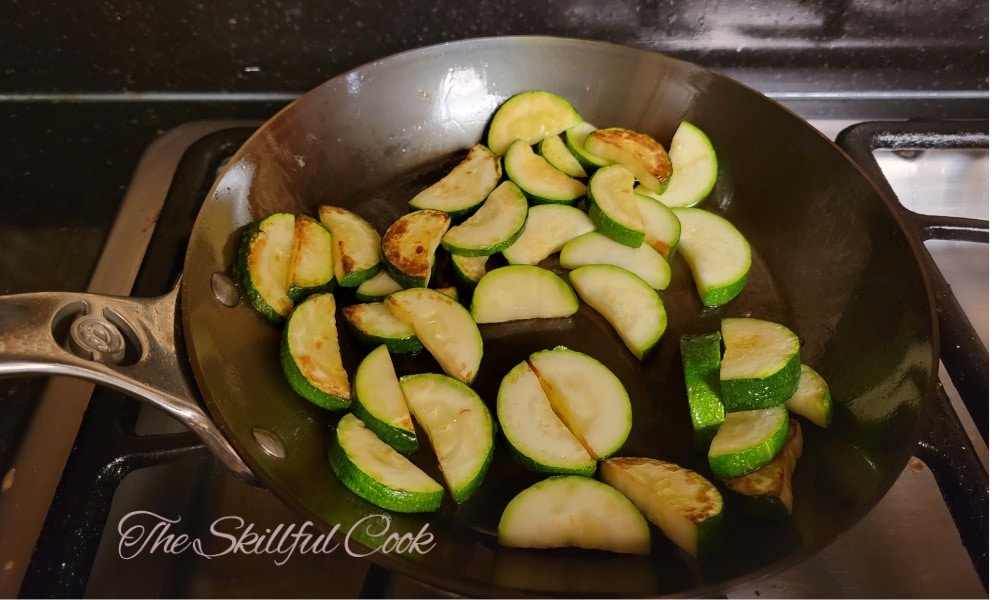
Carbon steel is a very versatile material that can be used on all cooktops, including induction and open flame. It has no chemical nonstick coating to damage. Instead, it has a natural layer of seasoning that needs to be maintained. This means these pans are metal utensil-safe.
Disadvantages of Carbon Steel Pans
The main downside to carbon steel is it needs to be seasoned to maintain its nonstick finish. This is a simple extra step to add, but it deters many people from buying these pans.
While carbon steel is versatile with the type of dishes it can cook, it’s not when it comes to pot variety. Most carbon steel items are skillets or woks so you can’t find a whole range of pots from this material.
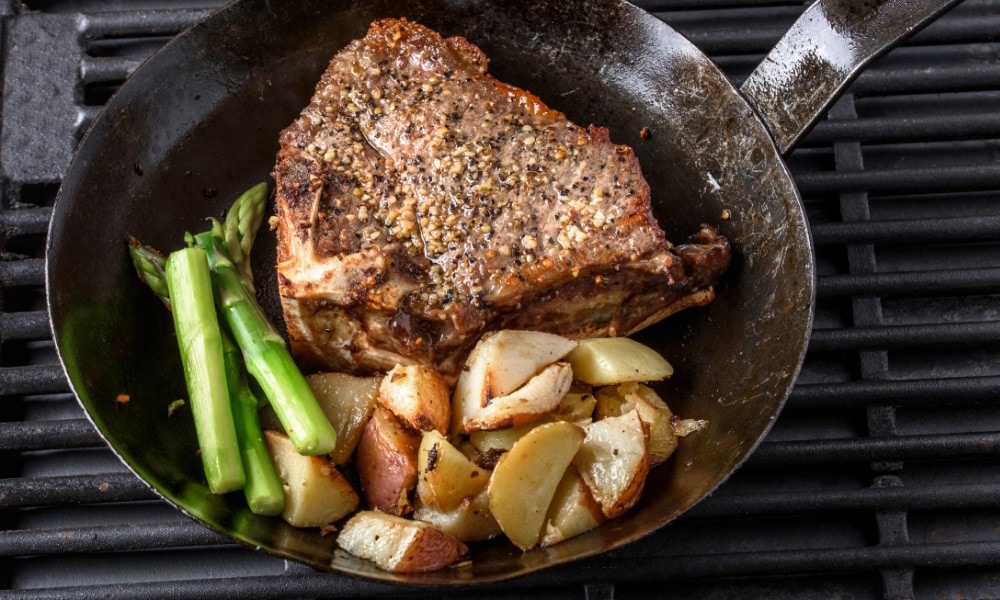
You need to handle carbon steel pans carefully because their thin walls make them more prone to warping and denting. They can also warp when heated too quickly.
Unfortunately, carbon steel is not dishwasher safe like aluminum, so it takes some delicate hand washing not to damage the seasoning.
What Can You Cook in a Carbon Steel Pan
Because it can handle high-intensity cooking, carbon steel is suitable for many dishes that aluminum is not. Carbon steel handles high heat well, so it’s better for searing and stove-to-oven dishes. It is also excellent for stir-frying as you won’t risk scratching the surface.
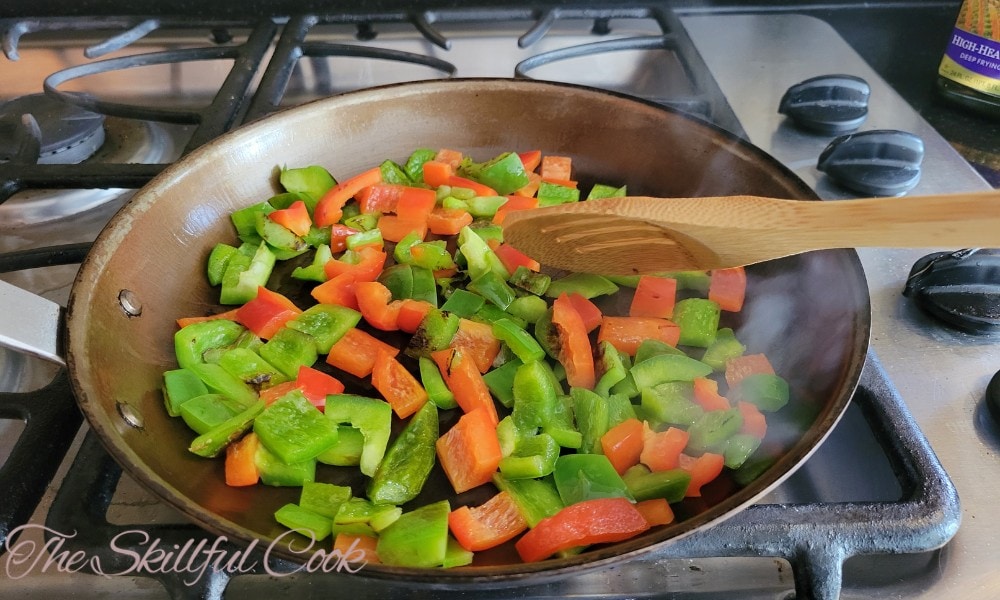
What to Avoid With Carbon Steel Pans
Like aluminum pans, carbon steel is not suited for cooking acidic dishes like tomato and wine sauces because it damages the seasoning layer. This is why I stick to stainless steel when I’m cooking acidic foods.
In contrast to aluminum, carbon steel pans are not great for delicate proteins like fish because they can so easily stick and break apart. I would avoid cooking breaded or battered dishes in carbon steel.
Are Carbon Steel or Aluminum Pans Toxic or Dangerous?
There are many concerns about the safety of food making direct contact with aluminum. The effects of this have not been fully explored, and this makes consumers uneasy. But most modern aluminum cookware won’t transfer aluminum to your food because they are coated. The aluminum isn’t coming into direct contact with the food. The question is the safety of the nonstick coating.
Teflon (aka PTFE) was manufactured using PFOA – a forever chemical” – previous to 2015 when PFOA was banned by the FDA. Now, Teflon uses a similar chemical called GenX, and can still be hazardous when overheated.
Ceramic coatings are PTFE-free, but there are some concerns about titanium nanoparticles getting into your food when ceramic coatings are scratched. Nonstick coatings are safest when they remain intact, so aluminum pans require an attentive cook who maintains their cookware.
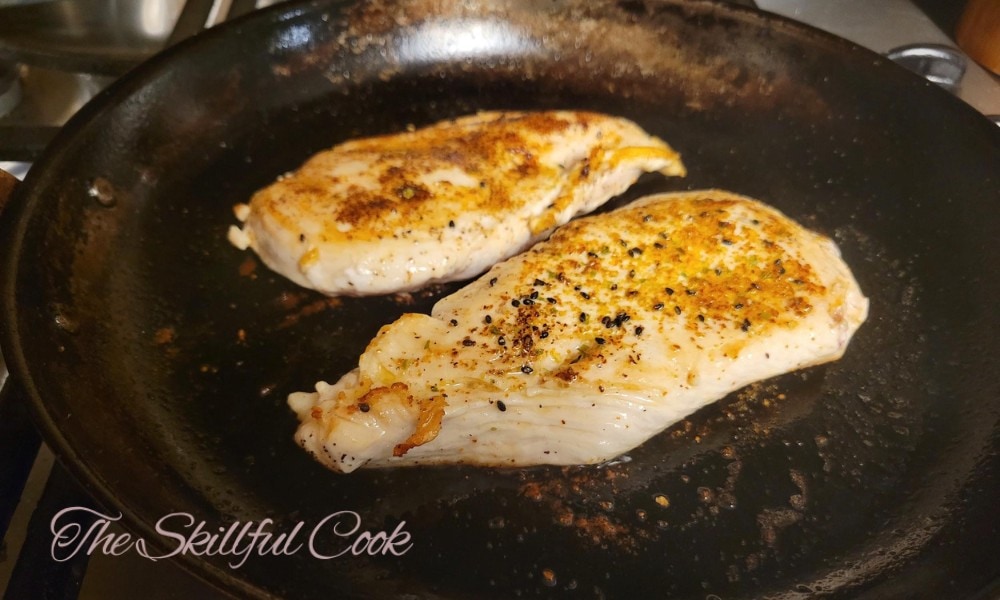
In contrast, carbon steel is sold as bare steel but forms a coating of polymerized oil with continuous usage. Since it’s made of mostly iron, it can transfer iron to your food – which can be a positive or a negative thing depending on your individual health goals. Carbon steel is universally considered to be a great nontoxic cookware option.
Is Carbon Steel or Aluminum Better for Bakeware?
Both of these materials are good for bakeware because they conduct heat swiftly and evenly. But carbon steel, since it requires seasoning, is rarely made into bakeware. Aluminum is better for bakeware overall because it’s cheaper and it doesn’t need seasoning. Baked goods tend to be less acidic, and don’t react with natural aluminum like sauces or stovetop-cooked dishes do.
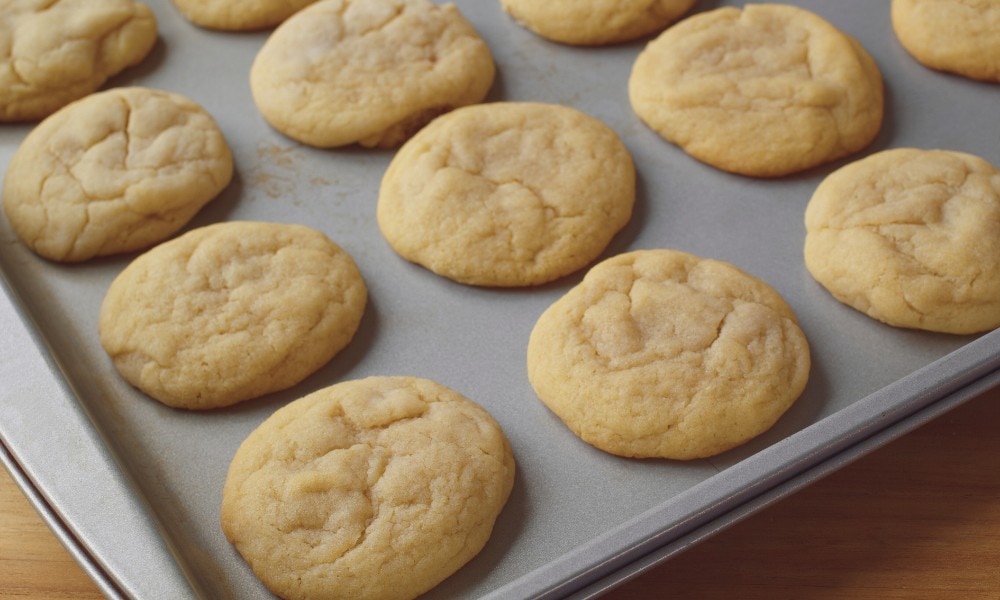
Conclusion
Ultimately, I’m a fan of both aluminum and carbon steel for different uses. A versatile home kitchen will have both these pans on hand and ready to go. Want to stir fry? Carbon steel. Want to cook some fish? Aluminum it is!
If you have any questions about either of these materials, don’t be shy; leave us a comment!

